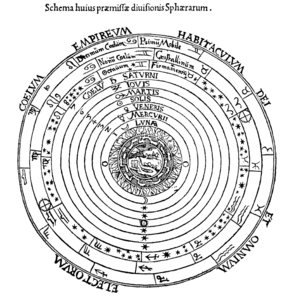I am sad - horrified really - to learn that some NASA scientists have caught cold fusion madness. As is so often the case with companies and research groups that get involved in this fruitless enterprise, they tend to make their case by first pointing out how nice it would be to have a clean, cheap, safe, effectively limitless source of power. Who could say no to that?
 | |
| NASA Langley scientists are hoping to build spacecraft powered with cold fusion. Image courtesy of NASA. |
NASA, for example, is promoting a cold fusion scheme that they say will power your house and car, and even a space plane that is apparently under development, despite the fact that cold fusion power supplies don't exist yet and almost certainly never will. And if that's not enough, NASA's brand of cold fusion can solve our climate change problems by converting carbon directly into nitrogen.
The one hitch in the plan, unfortunately, is that they're going to have to violate some very well established physics to make it happen. To say the least, I wouldn't count on it.
To be clear, cold fusion does indeed work - provided you use a heavier cousin of the electron, known as a muon, to make it happen. There is no question that muon-catalyzed fusion is a perfectly sound, well-understood process that would be an abundant source of energy, if only we could find or create a cheap source of muons. Unfortunately, it takes way more energy to create the muons that go into muon-catalyzed fusion than comes out of the reaction.
Cold fusion that doesn't involve muons, on the other hand, doesn't work. In fact, the very same physics principles that make muon-catalyzed fusion possible are the ones that guarantee that the muon-less version isn't possible.
To get around the problem presented by nature and her physical laws, NASA's scientists have joined other cold fusion advocates in rebranding their work under the deceptively scientific moniker LENR (Low Energy Nuclear Reactions), and backing it up with various sketchy theories.
The main theory currently in fashion among cold fusion people is the Widom-Larsen LENR theory, which claims that neutrons can result from interactions with "heavy electrons" and protons in a lump of material in a cold fusion experiment. These neutrons, so the argument goes, can then be absorbed in a material (copper is a popular choice) which becomes unstable and decays to form a lighter material (nickel, assuming you start with copper), giving off energy in the process.
At least one paper argues that Widom and Larsen made some serious errors in their calculations that thoroughly undermine their theory. But even if you assume the Widom-Larsen paper is correct, then there should be detectable neutrons produced in cold fusion experiments. (Coincidentally, it's primarily because no neutrons were detected in the original cold fusion experiments of Pons and Fleischmann that physicists were first clued into the fact no fusion was happening at all.)
Some proponents claim that the neutrons produced in the Widom-Larsen theory are trapped in the sample material and rapidly absorbed by atoms. But because the neutrons are formed at room temperature, they should have energies typical of thermal neutrons, which move on average at about 2000 meters a second. That means that a large fraction of them should escape the sample, and be easily detectable. Those that don't escape, but instead are absorbed by atoms would also lead to detectable radiation as the neutron-activated portions of the material decays. Either way, it would be pretty dangerous to be near an experiment like that, if it worked. The fact that cold fusion researchers are alive is fairly good evidence that their experiments aren't doing what they think they're doing.
But if you're willing to believe Widom-Larsen, and you suspend your disbelief long enough to accept that the neutrons exclusively stay in the sample for some reason, and that the energy released as a result dosn't include any radiation, it should still be pretty easy to determine if the experiments work. All you'd have to do is look for nickel in a sample that initially consisted of pure copper. If published proof exists, I haven't found it yet (please send links to peer-reviewed publications, if you've seen something).
Instead, people like NASA's Dennis Bushnell are happy with decidedly unscientific evidence for cold fusion. Among other things, Bushnell notes that " . . . several labs have blown up studying LENR and windows have melted, indicating when the conditions are "right" prodigious amounts of energy can be produced and released."
Of course, chemical reactions can blow things up and melt glass too. There's no reason to conclude nuclear reactions were responsible. And it certainly isn't publishable proof of cold fusion. Considering that most of these experiments involve hydrogen gas and electricity, it's not at all surprising that labs go up in flames on occasion.
On a related note, a recent article in Forbes magazine reported that Lewis Larsen, of the above-mentioned Widom-Larsen theory, claims that measurements of the isotopes of mercury in compact fluorescent bulbs indicate that LENR reactions are taking place in light fixtures everywhere. If only it were true, it would offer serious support for the Widom-Larsen theory.
It's too bad the paper Larsen cites says nothing of the sort. According to an article in Chemical and Engineering News, the scientists who performed the study of gas in fluorescent bulbs were motivated by the knowledge that some mercury isotopes are absorbed in the glass of the bulbs more readily than others. The isotope ratio inside isn't changing because of nuclear reactions, but instead by soaking into the glass at different rates. Sorry Lewis Larsen, nice try.
